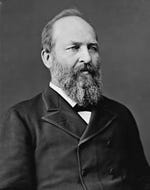The Good, Bad, and Ugly of Presidents and Medical Devices
February 13, 2015
The general election season has started in the United States. These four stories will get you in the "presidential" frame of mind--and hopefully provide some useful lessons when it comes to medical devices.
Chris Newmarker
Updated June 9, 2016
Both of the major U.S. political parties now have presumptive nominees for the presidency: Hillary Clinton for the Democrats and Donald Trump for the Republicans. With the general election season now upon us, it is a good time to draw lessons from the lives of the great people who have led America before.
That is actually true with medical devices, too. As with most other people, presidents have had their share of encounters with medical devices, with a mix of both tragic and inspiring results.
Here are four stories to take note of:
 1. George Washington
1. George Washington

America's first president was no stranger to medicine, especially of the dental variety: He suffered from tooth decay his entire adult life and soon had to wear uncomfortable false teeth made of ivory, and even animal and human teeth. What is less known--but equally interesting--is the way he died.
George Washington's demise still provides plenty of fodder for debate among medical experts--especially when it comes to whether the actions his doctors took in his final hours helped cause his death. It is a great example of how medical ideas can quickly change, and devices become obsolete.
Washington was having difficulty breathing after contracting some kind of throat infection after a day of riding in freezing rain and snow at Mount Vernon.
Howard Markel, MD, PhD, of the Center for the History of Medicine at the University of Michigan, recently told PBS that medical professionals these days would have probably inserted a tube through the blockage, or perhaps even performed a tracheotomy.
In the late 18th century, though, the answer was to let out blood. The idea was to remove pressure on the swelling. But in removing nearly half of Washington's blood volume over 12 hours, doctors certainly weakened him as he fought the infection. Did it make the situation worse? "Well, they certainly didn't help him," Markel says.
Check out this picture of Bacon's Artificial Leech, which was obviously considered state-of-the-art for its time. The major problem, though, was there was little or no efficacy.
 2. James Garfield
2. James Garfield

When it comes to James Garfield, there is an even stronger case that his doctors killed him. Read this great New York Times story about his agonizing death after an assassin shot him in the back at a Washington train station in 1881. This paragraph sums up the article well:
"Had Garfield been left where he lay, he might well have survived; the bullet failed to hit his spine or penetrate any vital organs. Instead, he was given over to the care of doctors, who basically tortured him to death over the next 11 weeks. Two of them repeatedly probed his wound with their unsterilized fingers and instruments before having him carted back to the White House on a hay-and-horsehair mattress."
It is worth noting that Alexander Graham Bell even invented a metal detecting device that could locate the bullet. But no good deed goes unpunished: it failed because a doctor insisted Bell search only on what was the wrong side of Garfield's torso. Still, medical imaging would take off in coming decades, especially with the discovery of x-rays in 1895 by Bavarian physicist Wilhelm Röntgen.
Just because something doesn't work initially, doesn't mean it's a bad idea.
 3. Franklin Roosevelt
3. Franklin Roosevelt

FDR never walked again after contracting polio in 1920. But he did use metal leg braces, strapped tightly to his legs, to lock his knees so that he could stand upright in public with the strength of his upper body, trained through vigorous exercise. (Roosevelt never wanted to be seen in public in his wheelchair, or other signs of his disability.)
Roosevelt eventually trained himself to provide an illusion of walking with his braces. He would use a strong person, usually one of his sons or an aide, to provide support on one side while holding a cane in his other hand. The person supporting him would step forward, Roosevelt would move his cane forward, and then Roosevelt would pretty much drag his legs forward, repeating the steps until he reached his destination. Roosevelt even used such a "walking" technique on the day he made his Pearl Harbor speech to Congress. Check out this clip from a History Channel documentary.
Strides have been made since Roosevelt's time in making people with disabilities feel more comfortable in public, so hopefully Roosevelt would have not have gone to such extreme lengths if he had lived today. Still, there is a desire to make devices that return the disabled back to a more normal life. The Luke Arm from Manchester, NH-based DEKA is one of the most cutting-edge examples.
 4. Bill Clinton
4. Bill Clinton

Stents have had a significant impact on cardiology, helping treat heart disease, a leading causes of death in the United States. One of the major beneficiaries has been Hillary Clinton's husband, Bill Clinton. In 2010--six years after a quadruple bypass surgery--Clinton was complaining of heart pains after a trip to earthquake-ravaged Haiti.
As with many people suffering from blockages, Clinton had two stents placed in one of his coronary arteries, in a routine procedure that was likely performed in a relaxed environment under "twilight sedation." Read this ABC News story about the procedure.
FDA approved the first stents in 1993 and 1994, and within a number of years, stents were used in 80% of percutaneous coronary interventions. Drug-eluting stents, which are designed to reduce problems with stent restenosis, were approved by FDA in 2003. Drug-eluting stents may decrease lesion revascularization as much as 50-70% according to clinical studies.
Bill Clinton's very continued existence, then, is testament to the power of new innovative medical technologies to save people's lives.
Chris Newmarker is senior editor of Qmed and MPMN. Follow him on Twitter at @newmarker.
Like what you're reading? Subscribe to our daily e-newsletter.
About the Author(s)
You May Also Like


